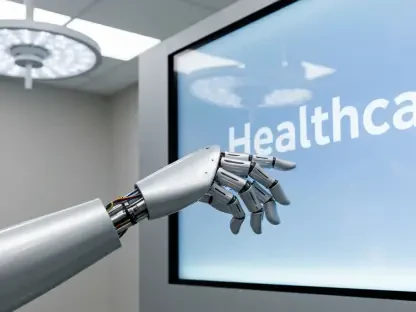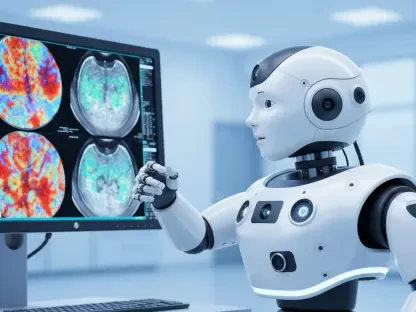Telemedicine has revolutionized healthcare by allowing doctors everywhere to remotely consult, diagnose, and monitor patients, bringing medical services closer to people. With technology now advancing at a fast pace, patients are able to get expert medical opinions without having to physically visit a clinic, cutting down healthcare expenses and waiting times considerably.
The addition of artificial intelligence has also boosted telemedicine by automating repetitive tasks, improving diagnostic accuracy, and providing data-driven insights for more effective treatment planning. AI-powered tools can potentially bridge healthcare gaps by providing real-time assistance, reducing the risk of human error, and enabling doctors to make better decisions faster.
AI application in telemedicine is not restricted to making it more accessible; it is changing the very nature of how healthcare professionals interact with patients and manage medical information. AI-powered apps like chatbots, virtual assistants, and medical diagnostics software can help doctors to identify diseases at an early stage and create personalized treatment plans. Machine learning algorithms sift through vast databases to forecast potential threats to health and patient outcomes.
With advanced AI, telemedicine is also expected to make healthcare provision more precise, preventive, and patient-oriented. AI-driven telemedicine technologies are important, and so is understanding their applications, benefits, and drawbacks. Only then can you hope to anticipate how the future of AI for remote health services will actually look.
The different roles AI plays in telemedicine
When it comes to medicine, AI has one critical benefit — it can actually make healthcare better by doing repetitive tasks – freeing doctors and health workers, analyzing big amounts of health data faster than humans, and helping with the decisions doctors have to make on the spot. AI tools have been demonstrated to help with patient triage, as AI and machine learning tools have the capacity to continuously learn from analyzing medical data.
To put it simply, these tools can get better and better at finding out what’s wrong, and at advising on how to treat. Moreover, “the integration of AI into the triage process yielded significant enhancements in predictive accuracy and risk assessment,” according to the study.
One of the most important changes AI has brought in telemedicine is the emergence of reliable chatbots and virtual assistants based on natural language processing or NLP. These apps support patients by providing them with health questions, taking their history, scheduling them to see doctors and health professionals, and so much more.
Chatbots have played a significant role during the COVID-19 pandemic, freeing health workers of multiple repetitive tasks like scheduling patients or changing appointments. This not only makes the work easier for health professionals but also ensures that patients get help right away even for health issues that are not urgent, making everyone happier and more involved.
AI is also changing the game in medical imaging and diagnostics. AI tools can now examine X-rays, MRIs, and CT scans in great detail, helping doctors see if their patients have developed cancer, fractures, or neurological problems. These tools can spot different problems fast, and they can also cut down on mistakes often made by humans, making it quicker to find the right diagnostic. Plus, AI and wearable devices can be used together to monitor heart rate, blood pressure, and glucose levels in patients with chronic conditions like type 2 diabetes. This preventive way of doing things is extremely important in telemedicine, as it can help doctors spot issues early.
The advantages of incorporating AI into telemedicine
The use of AI in telemedicine has numerous advantages, making access to care easier to get, more efficient, and ultimately helping patients more. AI-driven tools can fill the gaps by providing help in remote areas and in places with too few doctors. These tools also cut down on excessive paperwork, making the process of setting up a visit or a virtual appointment smoother. AI tools can also handle repetitive tasks, so health workers can pay more attention to taking care of patients directly. AI also provides doctors with new ways of diagnosing diseases by looking at patient info, uncovering early signs, and stepping in on time.
The study quoted above shows that AI technologies can improve triage “efficiency and resource allocation, predicting hospital admissions, identifying critical conditions, and alleviating ED overflow and healthcare professional workload.” In telemedicine, however, AI could also play an essential role in preventing diseases.
Challenges in adopting AI technologies
Despite the advantages, incorporating AI into telemedicine is not easy. AI-driven tools need to access private patient information, which comes with important concerns about keeping this data safe. Cybersecurity is also an issue, and so is HIPAA and GDPR compliance. As more AI tools are incorporated into telemedicine, making sure that patient information stays secure becomes vital.
Bias and accuracy of AI models are important concerns too. AI-powered tools train on data that, if not extensive or useful, can lead to mistakes and uneven health results. To tackle this, using top-quality data sets and permanently improving AI algorithms is a must.
Other concerns come from doctors, scientists, and health professionals. “Beyond ethical considerations, the acceptance, and adoption of AI technologies by healthcare professionals are critical for successful implementation,” according to the same study. Indeed, some doctors, scientists, and health professionals could prove reticence in adopting these new tools.
The Future of AI in Telemedicine
AI will undoubtedly push telemedicine forward by boosting speed, accuracy of diagnosis, and care access. Promising first steps have already been made by using AI to predict problems early on. In the future, AI-powered tools could be used extensively to analyze data and spot early signs of disease, including outbreaks. Because AI technologies can accurately analyze patterns, these tools can help doctors act on time and improve care.
Another important future step is to use AI with blockchain, an advanced database mechanism that keeps data safe. This technology could become an important factor in telemedicine as well, as it could solve some of the concerns regarding AI, including data protection and cybersecurity problems.









